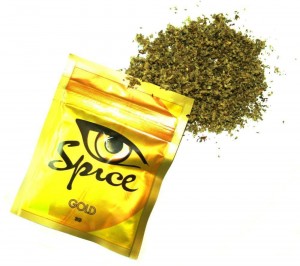Overdoses Possible on Synthetic Marijuana
 Several states have reported upticks in overdoses from synthetic marijuana over the past few years. Synthetic marijuana, sometimes called “spice” and sold under descriptors such as “botanical incense,” consists of man-made chemicals that are sprayed on plant matter and smoked, or sold as liquids to be consumed via e-cigarettes. Monitoring the Future, an ongoing survey of teen drug use in the US, reported in 2016 that 3.5% of high school seniors had used synthetic marijuana in the past year. The risks of the drug are not yet well known, since the chemicals used may vary from batch to batch.
Several states have reported upticks in overdoses from synthetic marijuana over the past few years. Synthetic marijuana, sometimes called “spice” and sold under descriptors such as “botanical incense,” consists of man-made chemicals that are sprayed on plant matter and smoked, or sold as liquids to be consumed via e-cigarettes. Monitoring the Future, an ongoing survey of teen drug use in the US, reported in 2016 that 3.5% of high school seniors had used synthetic marijuana in the past year. The risks of the drug are not yet well known, since the chemicals used may vary from batch to batch.
A case series published in the Western Journal of Emergency Medicine in 2016 described 11 cases of patients who received emergency room treatment for an overdose of the synthetic cannabinoid MAB-CHMINACA. According to the Drug Enforcement Agency, MAB-CHMINACA can cause severe toxicity, seizures, excited delirium, cardiotoxicity and death.
Kenneth D. Katz and colleagues reported that all 11 patients required sedation, while nine required intubation to provide respiratory support. Three of the 11 patients had seizures, and one suffered from hyperthermia (increased body temperature). One patient died as a result of decreased oxygen to the brain and rhabdomyolysis, a condition in which muscles break down and release toxins, shutting down the kidneys. Many of the 11 were children or adolescents.
Katz and colleageus stress that synthetic cannabinoid use is a public health crisis, and that emergency rooms should be prepared to provide aggressive sedation and respiratory support to people overdosing on MAB-CHMINACA.
Editor’s Note: ‘Spice’ is not only more potent than marijuana but also lacks the cannabinoids that are responsible for the beneficial effects of marijuana.
Synthetic Marijuana Comes with Serious Risks, Including Risks to Fetus
Synthetic marijuana, otherwise known as spice, skank, or K2, is not only vastly more potent than the tetrahydrocannabinol (THC) in marijuana plants, but it also lacks cannabidiol (CBD), the calming, antipsychotic substance also present in the plants. This makes spice much more likely to induce major psychiatric effects.
New evidence links use of spice during pregnancy to a tragic birth defect, anencephaly, or absence of the cerebral cortex. It can also lead to the later development of attention-deficit hyperactivity disorder, learning disabilities, memory impairment, depression, and aggression.
of spice during pregnancy to a tragic birth defect, anencephaly, or absence of the cerebral cortex. It can also lead to the later development of attention-deficit hyperactivity disorder, learning disabilities, memory impairment, depression, and aggression.
Effects of THC on gestation may occur as early as two weeks after conception, meaning by the time a woman realizes she is pregnant, the fetus may have been harmed by exposure to the drug.
Other new finding associate use of spice with acute coronary syndrome and the kind of acute kidney injury that can lead to the organ shutting down.
Editor’s Note: It has now been found that synthetic marijuana, or spice, can lead to psychosis, delirium, acute coronary syndrome (heart attack) in young people, and now kidney dysfunction, in addition to causing birth defects if used by pregnant women. Not only is spice made up of more potent THC without the calming effects of CBD, but it is often laced with unknown contaminants, which are likely the cause of the heart and kidney damage.
Smoking regular marijuana is bad enough—it doubles the risk of psychosis and may precipitate the onset of schizophrenia. It may also cause long-lasting effects on cognitive function. Since many states are legalizing marijuana, it is important to know the risks. In any case the risks are much more serious with the synthetic product, and synthetic marijuana should be avoided at all costs.

